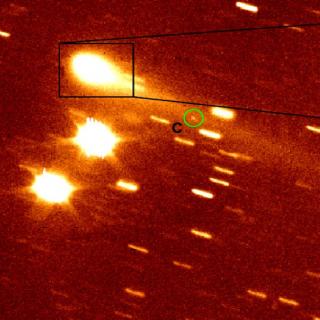Bibcode
De Prá, M. N.; Pinilla-Alonso, N.; Carvano, J.; Licandro, J.; Morate, D.; Lorenzi, V.; de León, J.; Campins, H.; Mothé-Diniz, T.
Referencia bibliográfica
Astronomy and Astrophysics
Fecha de publicación:
11
2020
Revista
Número de citas
11
Número de citas referidas
10
Descripción
Context. Asteroid families are witnesses to the intense collisional evolution that occurred on the asteroid belt. The study of the physical properties of family members can provide important information about the state of differentiation of the parent body and provide insights into how these objects were formed. Several of these asteroid families identified across the main belt are dominated by low-albedo, primitive asteroids. These objects are important for the study of Solar System formation because they were subject to weaker thermophysical processing and provide information about the early conditions of our planetary system.
Aims: We aim to study the diversity of physical properties among the Themis, Hygiea, Ursula, Veritas, and Lixiaohua families.
Methods: We present new spectroscopic data, combined with a comprehensive analysis using a variety of data available in the literature, such as albedo and rotational properties.
Results: Our results show that Themis and Hygiea families, the largest families in the region, present similar levels of hydration. Ursula and Lixiaohua families are redder in comparison to the others and present no sign of hydrated members based on the analysis of visible spectra. Conversely, Veritas presents the highest fraction of hydrated members.
Conclusions: This work demonstrates a diverse scenario in terms of the physical properties of primitive outer-belt families, which could be associated with dynamical mixing of asteroid populations and the level of differentiation of the parental body.
Aims: We aim to study the diversity of physical properties among the Themis, Hygiea, Ursula, Veritas, and Lixiaohua families.
Methods: We present new spectroscopic data, combined with a comprehensive analysis using a variety of data available in the literature, such as albedo and rotational properties.
Results: Our results show that Themis and Hygiea families, the largest families in the region, present similar levels of hydration. Ursula and Lixiaohua families are redder in comparison to the others and present no sign of hydrated members based on the analysis of visible spectra. Conversely, Veritas presents the highest fraction of hydrated members.
Conclusions: This work demonstrates a diverse scenario in terms of the physical properties of primitive outer-belt families, which could be associated with dynamical mixing of asteroid populations and the level of differentiation of the parental body.
Proyectos relacionados

Pequeños Cuerpos del Sistema Solar
Este Proyecto estudia las propiedades físicas y composicionales de los llamados pequeños cuerpos del Sistema Solar, que incluyen asteroides, objetos helados y cometas. Entre los grupos de mayor interés destacan los objetos trans-neptunianos (TNOs), incluyendo los objetos más lejanos detectados hasta la fecha (Extreme-TNOs o ETNOs); los cometas, y
Julia de
León Cruz